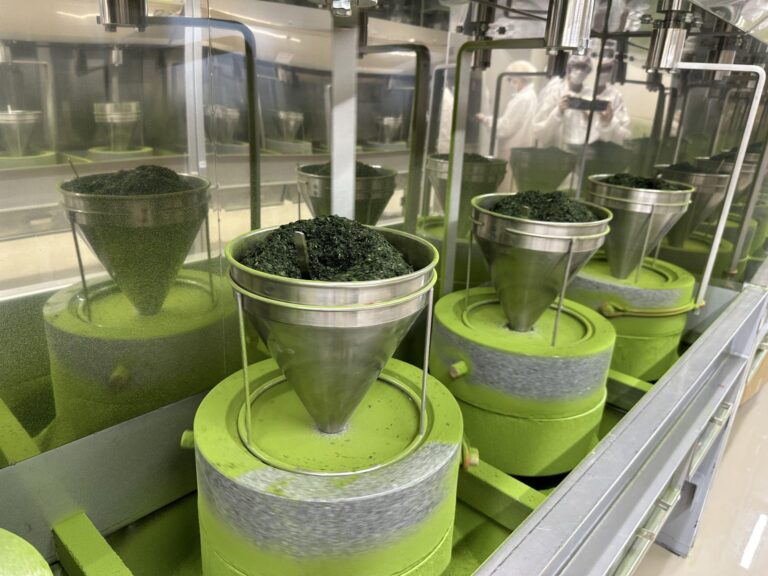As matcha continues to capture the palates of American consumers, a perfect storm of high demand and escalating US tariffs is threatening the availability of the beloved Japanese green tea powder. Once a niche ingredient reserved for traditional tea ceremonies, matcha has surged into mainstream popularity across the United States, fueling cafes, grocery stores, and health food markets. However, recent trade policies and supply chain disruptions are now casting a shadow over this trend, leading to noticeable shortages and price hikes. This article explores how tariffs and consumer appetite are reshaping the matcha market and what it means for fans of the vibrant green brew.
Impact of US Tariffs on Japan’s Matcha Exports and Supply Chain Disruptions
Recent US tariffs have imposed a significant strain on Japan’s matcha export market, compounding existing supply chain challenges. With added duties ranging from 10% to 25% on Japanese tea imports, distributors are facing steeper costs that are inevitably passed down to consumers. These increased expenses coincide with unprecedented demand for matcha in American cafes and retailers, driven by the drink’s surge in global popularity. As a result, Japanese producers are struggling to maintain their foothold in a competitive market, with many businesses reassessing their export strategies or scaling back shipments to navigate the financial pressure.
Supply chain disruptions further exacerbate the situation. Delays at key ports, trucking shortages, and labor constraints in both Japan and the US have created bottlenecks, stalling deliveries and escalating lead times. The complexity of transporting delicate tea leaves, which require precise packaging and timely handling, highlights the fragility of the matcha supply chain.
- Tariff increase: 10-25%
- Average export delay: 3-5 weeks
- Price rise for US retailers: 15-30%
| Factor | Impact | Outcome |
|---|---|---|
| Tariff hike | Increased costs for importers | Higher consumer prices |
| Port congestion | Shipment delays | Supply shortage |
| Labor shortages | Packaging and transport bottlenecks | Reduced export volume |
Rising Global Demand Challenges Production Capacity and Drives Prices Higher
The surge in global popularity of matcha has pushed Japanese producers to their limits, revealing cracks in the supply chain that were previously hidden. Traditionally a niche product consumed mainly in Japan, matcha has now captivated consumers worldwide, especially in the United States, where cafes and specialty shops have seen exponential growth in demand. This unprecedented appetite for the vibrant green tea powder has coincided with tightened US tariffs on Japanese imports, placing additional strain on pricing and distribution channels. Producers are struggling to scale up production without sacrificing the meticulous quality that defines authentic matcha, causing lead times to extend and prices to escalate.
Industry insiders warn that this mismatch between demand and supply could persist for some time. Small family-run farms-which account for a significant portion of matcha production-face limitations in expanding cultivation rapidly due to the delicate nature of tea leaves and the unique shading process required. Additionally, escalating costs for labor and farming inputs have contributed to the upward price pressure.
- Production constraints: Limited arable land and weather dependency restrict expansion.
- Tariff impact: Higher import duties are inflating retail costs in key markets.
- Labor shortages: Aging workforce in tea farming complicates scaling efforts.
| Factor | Impact | Current Status |
|---|---|---|
| US Tariffs | +15% cost increase | In effect since 2022 |
| Production Capacity | Limited growth to 5% annually | Near maximum output |
| Global Demand | +30% surge over 3 years | Continues to rise |
Strategies for Consumers and Retailers to Navigate the Emerging Matcha Shortage
Consumers can take proactive steps to manage expectations and seek alternatives during the matcha shortage. One effective approach is to explore blended green tea products which combine matcha with other green tea leaves, providing a similar flavor profile without the premium price tag or scarcity. Additionally, educating oneself on various grades of matcha-from ceremonial to culinary-can help shoppers identify more readily available options that suit their intended use, whether for drinking or baking. Finally, local tea shops and small-batch producers may offer fresh, artisanal matcha with shorter supply chains, potentially bypassing tariff-related delays and higher costs imposed on imports.
Retailers, meanwhile, must innovate to maintain customer loyalty amidst fluctuating availability and rising costs. Diversifying inventory by carrying a mix of domestically produced teas and imports from regions less impacted by tariffs can mitigate supply risks. Transparency is key; informing customers about the causes behind price hikes and shortages fosters trust and encourages patience. Incorporating flexible pricing strategies and offering bundle deals that combine matcha with complementary products-like tea accessories or recipe kits-can also stimulate sales and consumer excitement. Below is a simplified strategy comparison table for retailers navigating the shortage:
| Strategy | Benefit | Implementation Tip |
|---|---|---|
| Diversify Suppliers | Reduces dependency risks | Partner with local and alternative Asian vendors |
| Transparent Pricing | Builds customer trust | Use signage and social media updates |
| Bundle Offers | Increases sales and perceived value | Create thematic boxes (e.g., “Matcha Starter Kit”) |
To Wrap It Up
As the popularity of matcha continues to surge globally, the intersection of U.S. tariffs and soaring demand poses significant challenges for both producers and consumers. While the beloved Japanese green tea powder remains a symbol of tradition and wellness, its shrinking availability signals broader tensions in international trade and supply chains. How these issues will be resolved remains to be seen, but for now, matcha enthusiasts may need to brace for a less abundant future of their favorite drink.




